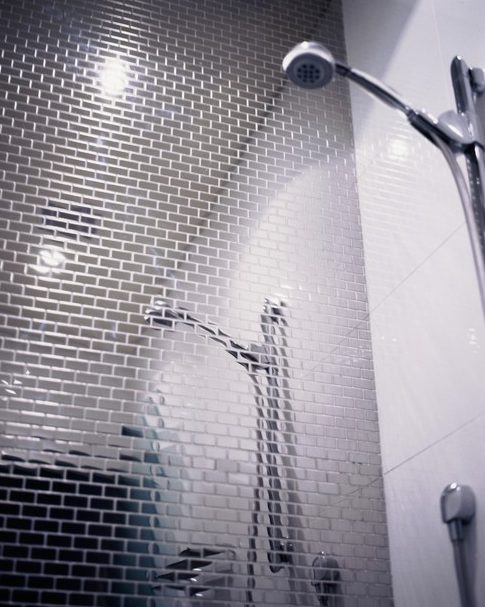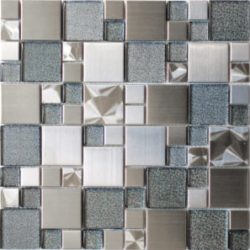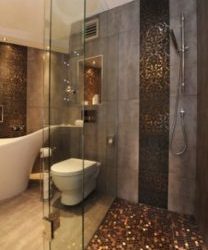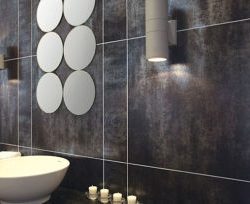Using Metallic Tiles In Wet Areas

Metal tiles in a shower…. Is it safe?
We see metals being used more and more often in luxurious shower designs. But, is metal safe and practical in a wet area like a shower?
Lets clarify some things first:
Some manufacturers allow (and warranty) their metallic tiles to be installed in wet areas. Typically, these tiles will be composed of stainless steel. Stainless steel can be highly resistant to oxidation as long as it is not mixed with another alloy (such as nickel). Check with your designer for a full explanation, and warranty information about your metallic products.
Another factor to consider is cleaning:
The type of care and maintenance will depend on the type of metal wall tile you choose, and the effect you desire. Copper tile, for example, will change its patina with exposure to air and moisture unless you seal it, and iron tile will rust unless it’s regularly cared for. Many other types will only need to be cleaned.
Most metal tiles can be cleaned with warm water and dish washing detergent. Wash down with a micro fiber cloth and rinse thoroughly so no streaks show on the metal wall tile.
When cleaning stainless steel tiles, don’t use soap and water. Instead, go for a proper stainless steel cleaner, applying it with a dry cloth that’s free of lint. Be very careful, since stainless steel tiles scratch easily. Note: Stainless steel requires additional cleaning. If you are not the type of person that loves to clean, you might want to look at a different decorative option for your shower.
With copper, unless you’ve sealed the surface, you actually have a couple of choices. You can allow the wall tiles to age and just clean them regularly with soap and water, or you can use copper cleaner to keep the original shine. The only difference is with patina copper tiles which come with a clear coat protection. In this case, never use copper cleaner, but stick to soap and water to keep the tile clean.
Titanium tiles need special care, even if they’re just titanium colored. Don’t use soap and water to clean them, but make up a solution of equal parts vinegar and water then apply with a clean, dry cloth to maintain their shine and cleanliness. However, one ideal factor about titanium is its resistance to oxidation. Titanium is typically a much safer option for metals in moist applications.
What about removing stains?
It’s possible that you could end up with stains on stainless steel wall tiles, caused by deposits of hard water. The tiles tend to look quite ugly under these circumstances, but the stains are very easy to remove. Make a paste, using either baking soda and water, or borax and water. Apply to the entire surface with a cloth (not a brush) then rinse off using warm water and a clean, dry cloth. This should remove the stains. If small marks remain, repeat the procedure. Don’t rub too hard or you might scratch the tiles.
When adding metallic tiles to your new shower design be very aware of the necessary effort it will take to maintain the luster and shine of the metal. Again, make sure with your designer that the tile being installed is warrantied in a wet area PER the Manufacturer.
Categorised in: Cleaning Products, How-To/Educational, Materials




Comments are closed here.